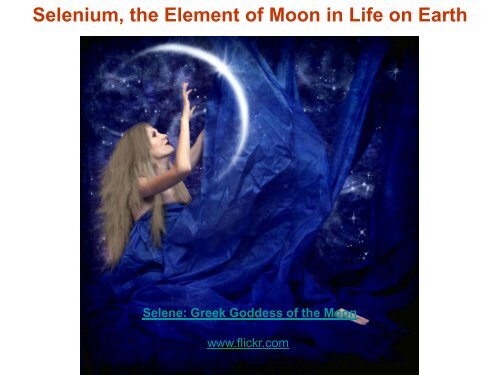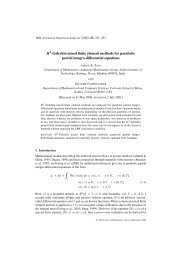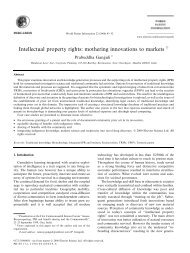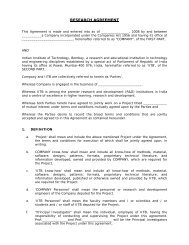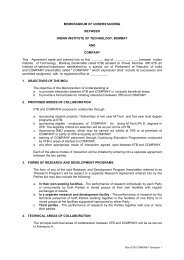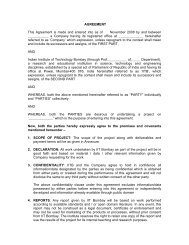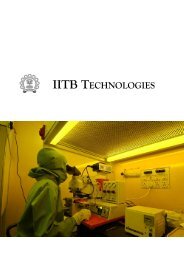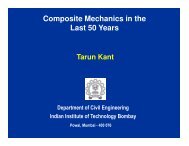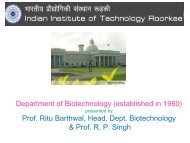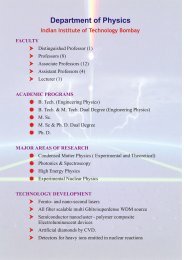Title : Selenium, the Element of Moon in Life on Earth - IRCC
Title : Selenium, the Element of Moon in Life on Earth - IRCC
Title : Selenium, the Element of Moon in Life on Earth - IRCC
You also want an ePaper? Increase the reach of your titles
YUMPU automatically turns print PDFs into web optimized ePapers that Google loves.
<str<strong>on</strong>g>Selenium</str<strong>on</strong>g>, <str<strong>on</strong>g>the</str<strong>on</strong>g> <str<strong>on</strong>g>Element</str<strong>on</strong>g> <str<strong>on</strong>g>of</str<strong>on</strong>g> <str<strong>on</strong>g>Mo<strong>on</strong></str<strong>on</strong>g> <str<strong>on</strong>g>in</str<strong>on</strong>g> <str<strong>on</strong>g>Life</str<strong>on</strong>g> <strong>on</strong> <strong>Earth</strong><br />
Selene: Greek Goddess <str<strong>on</strong>g>of</str<strong>on</strong>g> <str<strong>on</strong>g>the</str<strong>on</strong>g> <str<strong>on</strong>g>Mo<strong>on</strong></str<strong>on</strong>g><br />
www.flickr.com
‣ <str<strong>on</strong>g>Selenium</str<strong>on</strong>g> discovered by Swedish scientist J. J. Berzelius (1817)<br />
‣ Red deposit – rema<str<strong>on</strong>g>in</str<strong>on</strong>g>s after <str<strong>on</strong>g>the</str<strong>on</strong>g> roast<str<strong>on</strong>g>in</str<strong>on</strong>g>g <str<strong>on</strong>g>of</str<strong>on</strong>g> copper pyrites dur<str<strong>on</strong>g>in</str<strong>on</strong>g>g H 2 SO 4<br />
manufactur<str<strong>on</strong>g>in</str<strong>on</strong>g>g<br />
‣ Named after Greek mythological Goddess (<str<strong>on</strong>g>in</str<strong>on</strong>g> Greek, Selene = <str<strong>on</strong>g>Mo<strong>on</strong></str<strong>on</strong>g>)
Natural Resources <str<strong>on</strong>g>of</str<strong>on</strong>g> Se and its stable Isotopes<br />
Abundance<br />
Se<br />
Atomic Mass – 79.9165<br />
‣ M<str<strong>on</strong>g>in</str<strong>on</strong>g>erals c<strong>on</strong>ta<str<strong>on</strong>g>in</str<strong>on</strong>g><str<strong>on</strong>g>in</str<strong>on</strong>g>g selenium are very<br />
uncomm<strong>on</strong><br />
Mass<br />
Natural<br />
Abundance<br />
74 0.88<br />
76 8.95<br />
77 7.65 (I = ½)<br />
78 23.51<br />
80 49.62<br />
82 9.39<br />
‣ 70 th <str<strong>on</strong>g>in</str<strong>on</strong>g> abundance <str<strong>on</strong>g>of</str<strong>on</strong>g> <str<strong>on</strong>g>the</str<strong>on</strong>g> 88 that are present<br />
naturally <str<strong>on</strong>g>in</str<strong>on</strong>g> <str<strong>on</strong>g>the</str<strong>on</strong>g> earth crust<br />
‣ Most selenium is recovered as a by-product<br />
<str<strong>on</strong>g>of</str<strong>on</strong>g> process<str<strong>on</strong>g>in</str<strong>on</strong>g>g copper ores (Copper Pyrites)<br />
‣ 77 Se is NMR active<br />
White J. R.; Camer<strong>on</strong>. A. E. Phys. Rev., 1948, 74, 991-1000.
Allotropes <str<strong>on</strong>g>of</str<strong>on</strong>g> <str<strong>on</strong>g>Selenium</str<strong>on</strong>g><br />
‣ Grey (trig<strong>on</strong>al) selenium<br />
(Se n helical cha<str<strong>on</strong>g>in</str<strong>on</strong>g> polymers)<br />
‣ Grey (rhombohedral) selenium<br />
(Se 6 molecules)<br />
‣ Three deep-red (m<strong>on</strong>ocl<str<strong>on</strong>g>in</str<strong>on</strong>g>ic) forms<br />
(α, β, and γ-selenium c<strong>on</strong>ta<str<strong>on</strong>g>in</str<strong>on</strong>g><str<strong>on</strong>g>in</str<strong>on</strong>g>g<br />
Se 8 molecules)<br />
‣ Amorphous red selenium<br />
‣ Black vitreous selenium<br />
‣ Most <str<strong>on</strong>g>the</str<strong>on</strong>g>rmodynamically stable and<br />
<str<strong>on</strong>g>the</str<strong>on</strong>g> densest form: gray (trig<strong>on</strong>al)<br />
http://en.wikipedia.org/wiki/File:SeBlackRed.jpg<br />
http://www.chemistryexpla<str<strong>on</strong>g>in</str<strong>on</strong>g>ed.com/A-Ar/Allotropes.html
<str<strong>on</strong>g>Selenium</str<strong>on</strong>g> chemistry<br />
Group 16<br />
O<br />
S<br />
Se<br />
Te<br />
Po<br />
‣ Large, s<str<strong>on</strong>g>of</str<strong>on</strong>g>t atom, much s<str<strong>on</strong>g>of</str<strong>on</strong>g>ter than sulfur<br />
‣ Big, squashy atom; its electr<strong>on</strong> clouds large, diffuse and<br />
easily distorted<br />
‣ Nucleus exerts little effect <strong>on</strong> what happens at <str<strong>on</strong>g>the</str<strong>on</strong>g><br />
Periphery<br />
‣ Means Se can spread its electr<strong>on</strong> over many neighbors<br />
‣ Dual nature; ability to d<strong>on</strong>ate electr<strong>on</strong>s (metallic) and<br />
take electr<strong>on</strong>s (n<strong>on</strong>metallic) metalloid
Dissociati<strong>on</strong> Energies (kcal/mol)<br />
H 2 O 119<br />
H 2 S 93<br />
H 2 Se 75<br />
H 2 Te -<br />
pKa<br />
RS - 8.5<br />
RSe - 5.2<br />
~ Physiological pKa<br />
SH<br />
OH<br />
H 2 N<br />
O<br />
Cyste<str<strong>on</strong>g>in</str<strong>on</strong>g>e (Cys)<br />
SeH<br />
OH<br />
H 2 N<br />
O<br />
Selenocyste<str<strong>on</strong>g>in</str<strong>on</strong>g>e (Sec)
Importance <str<strong>on</strong>g>of</str<strong>on</strong>g> <str<strong>on</strong>g>Selenium</str<strong>on</strong>g> and its Derivatives<br />
Materials Chemistry<br />
Se<br />
Metal chalcogenides (CdSe) - Semic<strong>on</strong>ductors<br />
Ligands <str<strong>on</strong>g>in</str<strong>on</strong>g> catalysis
<str<strong>on</strong>g>Selenium</str<strong>on</strong>g> Toxicity<br />
<str<strong>on</strong>g>Selenium</str<strong>on</strong>g> <str<strong>on</strong>g>in</str<strong>on</strong>g> Biology<br />
Selenosis<br />
High blood levels <str<strong>on</strong>g>of</str<strong>on</strong>g> selenium (greater than 100 μg/dL)<br />
Symptoms - Gastro<str<strong>on</strong>g>in</str<strong>on</strong>g>test<str<strong>on</strong>g>in</str<strong>on</strong>g>al upsets, hair loss, white blotchy nails,<br />
garlic breath odor, fatigue, irritability, and mild nerve damage<br />
Bl<str<strong>on</strong>g>in</str<strong>on</strong>g>d Staggers<br />
Acute selenium pois<strong>on</strong><str<strong>on</strong>g>in</str<strong>on</strong>g>g <str<strong>on</strong>g>in</str<strong>on</strong>g><br />
cows and sheep caused by<br />
<str<strong>on</strong>g>in</str<strong>on</strong>g>gesti<strong>on</strong> <str<strong>on</strong>g>of</str<strong>on</strong>g> plants with high<br />
selenium c<strong>on</strong>tent<br />
Alkali Disease<br />
Acute selenium pois<strong>on</strong><str<strong>on</strong>g>in</str<strong>on</strong>g>g <str<strong>on</strong>g>in</str<strong>on</strong>g><br />
Cattle (Mox<strong>on</strong>, 1937)<br />
Severely damaged ho<str<strong>on</strong>g>of</str<strong>on</strong>g>s<br />
Marco Polo (1254-1324) writes for Kublai Khan <str<strong>on</strong>g>in</str<strong>on</strong>g> his travelogue<br />
<str<strong>on</strong>g>in</str<strong>on</strong>g>to Ch<str<strong>on</strong>g>in</str<strong>on</strong>g>a about pois<strong>on</strong>ous plants that animals ate and shed <str<strong>on</strong>g>the</str<strong>on</strong>g>ir<br />
hooves
<str<strong>on</strong>g>Selenium</str<strong>on</strong>g> deficiency (1930, Ch<str<strong>on</strong>g>in</str<strong>on</strong>g>a)<br />
‣ Keshan disease, which results <str<strong>on</strong>g>in</str<strong>on</strong>g> an enlarged and poor heart<br />
functi<strong>on</strong><br />
‣ Hypothyroidism (worsens iod<str<strong>on</strong>g>in</str<strong>on</strong>g>e deficiency)<br />
‣ Weakens immune system
<str<strong>on</strong>g>Selenium</str<strong>on</strong>g> Supplements<br />
Boost Your Immune System with <str<strong>on</strong>g>Selenium</str<strong>on</strong>g><br />
Maximum doses: 400 μg per day<br />
• Serv<str<strong>on</strong>g>in</str<strong>on</strong>g>g Size : 2 Droppers (2 mL) daily <str<strong>on</strong>g>in</str<strong>on</strong>g> water<br />
or juice as ma<str<strong>on</strong>g>in</str<strong>on</strong>g>tenance<br />
• Serv<str<strong>on</strong>g>in</str<strong>on</strong>g>gs Per C<strong>on</strong>ta<str<strong>on</strong>g>in</str<strong>on</strong>g>er : 120<br />
http://www.m<str<strong>on</strong>g>in</str<strong>on</strong>g>eralife<strong>on</strong>l<str<strong>on</strong>g>in</str<strong>on</strong>g>e.com/pd-selenium-8oz.cfm
ROS Generat<str<strong>on</strong>g>in</str<strong>on</strong>g>g and Scaveng<str<strong>on</strong>g>in</str<strong>on</strong>g>g Systems<br />
_<br />
ONOO<br />
HOCl<br />
H 2 O 2<br />
H2 O<br />
1 O2 +<br />
Cl<br />
_ MPO<br />
NO O 2 O2 Fe 2+ Fe 3+ H<br />
_<br />
O 2 O 2 H 2 O 2 OH H 2 O<br />
SOD<br />
e<br />
H 2 O<br />
MPO - Myeloperoxidase<br />
2H 2 O<br />
H 2 O + O 2<br />
GPx<br />
catalase<br />
SOD<br />
H 2 O 2<br />
O 2<br />
_<br />
lact<str<strong>on</strong>g>of</str<strong>on</strong>g>err<str<strong>on</strong>g>in</str<strong>on</strong>g><br />
X<br />
Fe 2+ Fe 3+<br />
NO<br />
OH<br />
ONOO _<br />
oxidative stress<br />
lipid<br />
peroxidati<strong>on</strong><br />
antioxidant<br />
enzymes<br />
X<br />
oxidati<strong>on</strong><br />
nitrati<strong>on</strong><br />
nitrosati<strong>on</strong>
Reactive Oxygen Species (ROS)<br />
<br />
Damage <str<strong>on</strong>g>of</str<strong>on</strong>g> cell membranes<br />
<br />
DNA cleavage<br />
<br />
Guan<str<strong>on</strong>g>in</str<strong>on</strong>g>e Oxidati<strong>on</strong><br />
<br />
Neurodegenerative diseases like<br />
<br />
Alzheimer, Park<str<strong>on</strong>g>in</str<strong>on</strong>g>s<strong>on</strong>’s<br />
<br />
Age<str<strong>on</strong>g>in</str<strong>on</strong>g>g<br />
<br />
Inflammati<strong>on</strong><br />
<br />
Certa<str<strong>on</strong>g>in</str<strong>on</strong>g> Cancers
The defense system<br />
‣ Cellular thiols (Glutathi<strong>on</strong>e, thioredox<str<strong>on</strong>g>in</str<strong>on</strong>g>e) – Redox Buffers<br />
‣ Antioxidants<br />
– Ascorbic acid<br />
– Vitam<str<strong>on</strong>g>in</str<strong>on</strong>g> E and o<str<strong>on</strong>g>the</str<strong>on</strong>g>r Phenolic compounds<br />
‣ Antioxidant enzymes<br />
Catalase is a hemeprote<str<strong>on</strong>g>in</str<strong>on</strong>g><br />
– Catalyzes <str<strong>on</strong>g>the</str<strong>on</strong>g> disproporti<strong>on</strong> <str<strong>on</strong>g>of</str<strong>on</strong>g> H 2 O 2<br />
Superoxide dismutase: Cu-Zn-SOD, Fe-SOD, Mn-SOD<br />
– Catalyzes <str<strong>on</strong>g>the</str<strong>on</strong>g> disproporti<strong>on</strong>ati<strong>on</strong> <str<strong>on</strong>g>of</str<strong>on</strong>g> HO 2<br />
Sulfiredox<str<strong>on</strong>g>in</str<strong>on</strong>g>e is a cyste<str<strong>on</strong>g>in</str<strong>on</strong>g>e c<strong>on</strong>ta<str<strong>on</strong>g>in</str<strong>on</strong>g><str<strong>on</strong>g>in</str<strong>on</strong>g>g enzyme<br />
- Reducti<strong>on</strong> <str<strong>on</strong>g>of</str<strong>on</strong>g> H 2 O 2<br />
Glutathi<strong>on</strong>e peroxidase is a selenocyste<str<strong>on</strong>g>in</str<strong>on</strong>g>e c<strong>on</strong>ta<str<strong>on</strong>g>in</str<strong>on</strong>g><str<strong>on</strong>g>in</str<strong>on</strong>g>g enzyme<br />
- Reducti<strong>on</strong> <str<strong>on</strong>g>of</str<strong>on</strong>g> H 2 O 2
Selenoenzymes (14 discovered)<br />
‣ <str<strong>on</strong>g>Selenium</str<strong>on</strong>g> Biochemistry Emerged <str<strong>on</strong>g>in</str<strong>on</strong>g> 1973, after <str<strong>on</strong>g>the</str<strong>on</strong>g> discovery two<br />
bacterial enzymes<br />
Enzyme<br />
Formate<br />
dehydrogenases<br />
Glys<str<strong>on</strong>g>in</str<strong>on</strong>g>e reductase<br />
Glutathi<strong>on</strong>e<br />
peroxidases (GPx)<br />
Phospholipidehydroperoxide-GPx<br />
Type-I iodothyr<strong>on</strong><str<strong>on</strong>g>in</str<strong>on</strong>g>e<br />
deiod<str<strong>on</strong>g>in</str<strong>on</strong>g>ase<br />
Reacti<strong>on</strong><br />
HCOOH → CO 2<br />
+ 2H+ 2e -<br />
Gly + 2e - + 4H + + ADP + P i<br />
→ Acetate<br />
+ NH 4+<br />
+ ATP<br />
H 2<br />
O 2<br />
+ 2GSH → 2H 2<br />
O + GSSG<br />
ROOH + 2GSH → ROH + H 2<br />
O + GSSG<br />
L-Thyrox<str<strong>on</strong>g>in</str<strong>on</strong>g>e + 2e - + H + → 3,5,3'-<br />
iodothyr<strong>on</strong><str<strong>on</strong>g>in</str<strong>on</strong>g>e + I -<br />
Thioredox<str<strong>on</strong>g>in</str<strong>on</strong>g> reductase NADPH + Trx ox<br />
→ NADP+ Trx red<br />
Selenophosphate<br />
synthatase<br />
Selenoprote<str<strong>on</strong>g>in</str<strong>on</strong>g> P<br />
HSe - + ATP → HSe-PO 3<br />
H 2<br />
+ AMP + P i<br />
Antioxidant?<br />
‣ GSH – Reduced glutathi<strong>on</strong>e<br />
‣ ROOH – Lipid hydroperoxide<br />
‣ Trx - Thioredox<str<strong>on</strong>g>in</str<strong>on</strong>g>
Iodothyr<strong>on</strong><str<strong>on</strong>g>in</str<strong>on</strong>g>e Deiod<str<strong>on</strong>g>in</str<strong>on</strong>g>ase<br />
T4<br />
T3<br />
Ratio <str<strong>on</strong>g>of</str<strong>on</strong>g> T4/T3 released <str<strong>on</strong>g>in</str<strong>on</strong>g> blood = 20/1<br />
‣ The thyroid is <strong>on</strong>e <str<strong>on</strong>g>of</str<strong>on</strong>g> <str<strong>on</strong>g>the</str<strong>on</strong>g> largest endocr<str<strong>on</strong>g>in</str<strong>on</strong>g>e glands <str<strong>on</strong>g>in</str<strong>on</strong>g> <str<strong>on</strong>g>the</str<strong>on</strong>g> body<br />
‣ This gland is found <str<strong>on</strong>g>in</str<strong>on</strong>g> <str<strong>on</strong>g>the</str<strong>on</strong>g> neck <str<strong>on</strong>g>in</str<strong>on</strong>g>ferior (below) to <str<strong>on</strong>g>the</str<strong>on</strong>g> thyroid cartilage (also known<br />
as <str<strong>on</strong>g>the</str<strong>on</strong>g> Adam's apple <str<strong>on</strong>g>in</str<strong>on</strong>g> men) and at approximately <str<strong>on</strong>g>the</str<strong>on</strong>g> same level as <str<strong>on</strong>g>the</str<strong>on</strong>g> cricoid<br />
cartilage<br />
‣ The thyroid c<strong>on</strong>trols how quickly <str<strong>on</strong>g>the</str<strong>on</strong>g> body uses energy, makes prote<str<strong>on</strong>g>in</str<strong>on</strong>g>s, and c<strong>on</strong>trols<br />
how sensitive <str<strong>on</strong>g>the</str<strong>on</strong>g> body should be to o<str<strong>on</strong>g>the</str<strong>on</strong>g>r horm<strong>on</strong>es
Catalytic Cycle <str<strong>on</strong>g>of</str<strong>on</strong>g> Iodothir<strong>on</strong><str<strong>on</strong>g>in</str<strong>on</strong>g>e Deiod<str<strong>on</strong>g>in</str<strong>on</strong>g>ase<br />
T4<br />
T3<br />
RSSR<br />
+<br />
HI<br />
ESeH<br />
T4<br />
‣ Thiol c<str<strong>on</strong>g>of</str<strong>on</strong>g>actor<br />
Is not yet identified<br />
RSH<br />
ESeI<br />
T3<br />
Berry, M. J.; Banu, L.; Larsen, P. R. Nature 1991, 349, 438.
Glutathi<strong>on</strong>e Peroxidase (GPx)<br />
<br />
Cytosolic GPx (cGPx) – uses GSH as co-substrate<br />
<br />
Reducti<strong>on</strong> <str<strong>on</strong>g>of</str<strong>on</strong>g> hydrogen peroxides and organic peroxides<br />
ROOH + 2GSH<br />
GPx<br />
ROH + GSSG + H 2 O<br />
‣ Tetramer <str<strong>on</strong>g>of</str<strong>on</strong>g> four identical subunits; each subunit c<strong>on</strong>ta<str<strong>on</strong>g>in</str<strong>on</strong>g>s a<br />
selenocyste<str<strong>on</strong>g>in</str<strong>on</strong>g>e residue<br />
‣ Catalytic triad – SeCys, Gln, Trp - Selenolate is highly stabilized<br />
H 2 N<br />
COOH<br />
O<br />
H<br />
N<br />
O<br />
SH<br />
N<br />
H<br />
O<br />
OH<br />
-Glu-Cys-Gly<br />
(GSH)
Structure <str<strong>on</strong>g>of</str<strong>on</strong>g> Glutathi<strong>on</strong>e Peroxidase<br />
Tetramer <str<strong>on</strong>g>of</str<strong>on</strong>g> four identical subunits; each subunit<br />
(M.W. 21,000 Dalt<strong>on</strong>)<br />
c<strong>on</strong>ta<str<strong>on</strong>g>in</str<strong>on</strong>g>s a selenocyste<str<strong>on</strong>g>in</str<strong>on</strong>g>e residue at <str<strong>on</strong>g>the</str<strong>on</strong>g> active site<br />
Trp148<br />
H<br />
N<br />
+<br />
H<br />
SeCys<br />
Se<br />
.....<br />
.....<br />
H 2 N<br />
Gln70<br />
O<br />
Wendel et al. Eur. J. Biochem. 1983, 133, 51
Syn<str<strong>on</strong>g>the</str<strong>on</strong>g>tic Mimics<br />
Wils<strong>on</strong>, S. R.; Zuker, P, A.; Huang, R. C.; Spector, A. J. Am. Chem. Soc. 1989, 111, 5936.<br />
Rup<str<strong>on</strong>g>in</str<strong>on</strong>g>der, K.; S<str<strong>on</strong>g>in</str<strong>on</strong>g>gh, H. B.; Patel. R. P. Dalt<strong>on</strong> Trans. 1996, 2719.
Catalytic Activity<br />
‣ UV Method us<str<strong>on</strong>g>in</str<strong>on</strong>g>g Benzenethiol as GSH Alternative<br />
Abs<br />
2<br />
‣ Initial reducti<strong>on</strong> rates <str<strong>on</strong>g>of</str<strong>on</strong>g> hydrogen peroxides<br />
Time<br />
‣ UV absorpti<strong>on</strong> <str<strong>on</strong>g>in</str<strong>on</strong>g>creases at 305 nm due to <str<strong>on</strong>g>the</str<strong>on</strong>g> formati<strong>on</strong> <str<strong>on</strong>g>of</str<strong>on</strong>g> PhSSPh<br />
C = ( 1 C 0 -2a)/( 1 -2 2 )<br />
C = c<strong>on</strong>c. <str<strong>on</strong>g>of</str<strong>on</strong>g> PhSH, C 0 = Initial c<strong>on</strong>c. <str<strong>on</strong>g>of</str<strong>on</strong>g> PhSH, a = absorpti<strong>on</strong><br />
1 = Molar ext<str<strong>on</strong>g>in</str<strong>on</strong>g>cti<strong>on</strong> coefficient <str<strong>on</strong>g>of</str<strong>on</strong>g> PhSSPh = 1.24 X 10 3 M -1 cm -1<br />
2 = Molar ext<str<strong>on</strong>g>in</str<strong>on</strong>g>cti<strong>on</strong> coefficient <str<strong>on</strong>g>of</str<strong>on</strong>g> PhSH = 9 M -1 cm -1<br />
S<str<strong>on</strong>g>in</str<strong>on</strong>g>ce 1 2 , C = C 0 - 2a/ 1<br />
* Initial reducti<strong>on</strong> rates 1/v vs 1/C plots - L<str<strong>on</strong>g>in</str<strong>on</strong>g>eweaver-Burk plots<br />
* Comparis<strong>on</strong> <str<strong>on</strong>g>of</str<strong>on</strong>g> v 0 at PhSH 1 mM level
1/v (mM m<str<strong>on</strong>g>in</str<strong>on</strong>g>) -1<br />
Catalytic Activity<br />
‣ L<str<strong>on</strong>g>in</str<strong>on</strong>g>eweaver-Burk plots obta<str<strong>on</strong>g>in</str<strong>on</strong>g>ed for 0.01 mM <str<strong>on</strong>g>of</str<strong>on</strong>g> 18. The <str<strong>on</strong>g>in</str<strong>on</strong>g>itial H 2 O 2 c<strong>on</strong>centrati<strong>on</strong><br />
was fixed to 3.75 mM. The <str<strong>on</strong>g>in</str<strong>on</strong>g>itial PhSH c<strong>on</strong>centrati<strong>on</strong> (C 0 ) was 1 mM<br />
8<br />
[18] = 0.01 mM<br />
4<br />
0<br />
1.0 1.2 1.4 1.6 1.8 2.0<br />
1/[PhSH] (mM<br />
-1<br />
)<br />
Best Fit : Y = 4.73111X + (-3.04687)<br />
Initial Reducti<strong>on</strong> Rate (v 0 ) = 593.74 µm m<str<strong>on</strong>g>in</str<strong>on</strong>g> -1 . This v 0 was obta<str<strong>on</strong>g>in</str<strong>on</strong>g>ed by<br />
substitut<str<strong>on</strong>g>in</str<strong>on</strong>g>g X = 1 mM <str<strong>on</strong>g>in</str<strong>on</strong>g> <str<strong>on</strong>g>the</str<strong>on</strong>g> above l<str<strong>on</strong>g>in</str<strong>on</strong>g>ear equati<strong>on</strong>.
GPx-Like Activity <str<strong>on</strong>g>of</str<strong>on</strong>g> Chiral Ferrocenyl <str<strong>on</strong>g>Selenium</str<strong>on</strong>g><br />
Derivatives<br />
<br />
Initial Reducti<strong>on</strong> Rates (ν 0<br />
) <str<strong>on</strong>g>of</str<strong>on</strong>g> H 2 O 2 (3.75 mM) with PhSH (1 mM) <str<strong>on</strong>g>in</str<strong>on</strong>g> methanol <str<strong>on</strong>g>in</str<strong>on</strong>g><br />
<str<strong>on</strong>g>the</str<strong>on</strong>g> presence <str<strong>on</strong>g>of</str<strong>on</strong>g> various selenium catalysts (0.01 mM)<br />
Catalysts ν 0 M m<str<strong>on</strong>g>in</str<strong>on</strong>g><br />
-1<br />
0.55 (0.18)<br />
Catalysts ν 0 M m<str<strong>on</strong>g>in</str<strong>on</strong>g><br />
-1<br />
36.10 (0.12)<br />
3.39 (0.37)<br />
3.16 (0.52)<br />
3.83 (0.32)<br />
[R, S; R, S] (+)<br />
[S, R; S, R] (-)<br />
574.01 (23.98)<br />
466.49 (28.26)<br />
5.78 (0.79)<br />
Inactive Catalysts<br />
28.38 (3.88)
Intermediates and Catalytic Cycle<br />
Nucleophilic attack by thiol at<br />
sulfur and not at selenium
Intramolecular Interacti<strong>on</strong> and Thiol Exchange<br />
‣ Str<strong>on</strong>g SeN <str<strong>on</strong>g>in</str<strong>on</strong>g>teracti<strong>on</strong><br />
‣ Does not favor selenol formati<strong>on</strong><br />
‣ Thiol exchange occurs<br />
‣ Weak SeN <str<strong>on</strong>g>in</str<strong>on</strong>g>teracti<strong>on</strong><br />
‣ Favors selenol formati<strong>on</strong><br />
‣ No thiol exchange<br />
Mugesh, G.; S<str<strong>on</strong>g>in</str<strong>on</strong>g>gh, H. B. Chem. Soc. Rev. 2000, 29, 347−357.<br />
Mugesh, G.; Panda, A.; S<str<strong>on</strong>g>in</str<strong>on</strong>g>gh, H. P.; Punekar, N. S.; Butcher, R. J. Chem. Commun. 1998, 2227−2228.<br />
Mugesh, G.; Panda, A. S<str<strong>on</strong>g>in</str<strong>on</strong>g>gh, H. B.; Punekar, N. S.; Butcher, R. J. J. Am. Chem. Soc. 2001, 123, 839−850.
Group
Group
Acknowledgements<br />
o<br />
o<br />
Pr<str<strong>on</strong>g>of</str<strong>on</strong>g>. Ray J. Butcher<br />
Pr<str<strong>on</strong>g>of</str<strong>on</strong>g>. N. S. Punekar<br />
‣ DST, CSIR, BRNS<br />
‣ Department <str<strong>on</strong>g>of</str<strong>on</strong>g> Chemistry<br />
‣ SAIF and <strong>IRCC</strong><br />
‣ IIT Bombay
UGA - Cod<strong>on</strong><br />
‣ Uracil-Guan<str<strong>on</strong>g>in</str<strong>on</strong>g>e-Aden<str<strong>on</strong>g>in</str<strong>on</strong>g>e (UGA)<br />
‣ This cod<strong>on</strong> is generally a stop cod<strong>on</strong><br />
‣ The UGA cod<strong>on</strong> is made to encode selenocyste<str<strong>on</strong>g>in</str<strong>on</strong>g>e by <str<strong>on</strong>g>the</str<strong>on</strong>g><br />
presence <str<strong>on</strong>g>of</str<strong>on</strong>g> a SECIS element (SelenoCyste<str<strong>on</strong>g>in</str<strong>on</strong>g>e Inserti<strong>on</strong><br />
Sequence) <str<strong>on</strong>g>in</str<strong>on</strong>g> <str<strong>on</strong>g>the</str<strong>on</strong>g> mRNA
Microreview . Thomas Wirth et al.<br />
Recent Advances <str<strong>on</strong>g>in</str<strong>on</strong>g> Organoselenium Chemistry
Applicati<strong>on</strong> <str<strong>on</strong>g>of</str<strong>on</strong>g> Organoselenium Compounds <str<strong>on</strong>g>in</str<strong>on</strong>g><br />
Organic Syn<str<strong>on</strong>g>the</str<strong>on</strong>g>sis<br />
Diphenyl Diselenide<br />
Wirth et al., Eur. Org. Chem. 2009, 1639.<br />
CAS Number: 1666-13-3<br />
Commercial
In-Situ 77 Se NMR Studies/Oxazol<str<strong>on</strong>g>in</str<strong>on</strong>g>e Derivatives<br />
Thiol exchange


